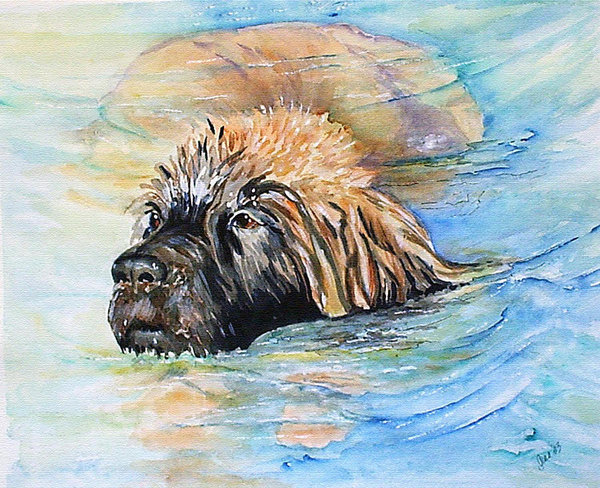
Be the critic.
We seldom write book reviews here, but a book published just this year (2018) has caught our attention not only for itemizing the pros and cons of each type of dog (sporting, toy, herding, etc), but for “using cutting edge research” to develop a system that enables dog owners to figure out exactly what issues their dog is dealing is, and how to fix it. Because author, Kim Brophey’s book, Meet Your Dog, is over 250 pages, we’re not going to delve into those issues or their remedies, though you can read the reviews left by people who bought the book here; we think it would be interesting, however, to touch upon the bullet point characteristics of each type of dog by group, and see if you agree or disagree. By all means, get the book (available at bookstores and libraries) and tell us what you think about the rest of it!
The author refers to sighthounds as “regal runners.” Falling in love with a sighthound for its elegance, and its reserved and romantic nature is easy because the dog’s affection delivered with passion, sincerity and affection. Sighthounds may be tough to live with, however, because they are sensitive, a “flight risk” (think “squirrel!”), and more inclined to be self directed than to follow their owner’s directions. The rest of the chapter on sighthounds (and all the other groups) offers a bit of history, as well as key concepts to remember when training or working with that particular type of dog.
The Guardian type dog (which are the Livestock Guardian Breeds) also includes breeds we know as AKC “working” breeds, i.e., the Komondor, Kuvasz, Newfoundland, Tibetan Mastiff, St. Bernard, Bullmastiff, Swissys, Mastiffs, Great Danes, Leonbergers, Neapolitan Mastiffs, Cane Corso, Great Pyrenees, Dogue de Bordeaux, Berners, and Boerboels. These breeds are easy to like for their level headed coolness, tolerance, and protective inclinations. Conversely, they may be challenging because they are opinionated, suspicious, and many of them pretty darn big!
The wrong owner for a Toy Breed may feel that toys are just too co-dependent or clingy; a few of them may be prone to alarm barking and defensiveness, and most are fragile! On the other hand, they are utterly engaging, portable and easy to care for, and intuitive.
The Scenthounds, or as the author calls them, “Siren Hunters,” are lovable for their outgoing friendliness, their hilarity, and for wearing their heart on their sleeve; some owners, however, may not admire a scenthound’s impulsiveness (which includes a talent for tuning out the rest of the world when he or she on a scent), nor its propensity for the dramatic. These dogs, as the author puts it, are “born to bay [their] little heart out when life gets exciting.” Part and parcel of life with a scenthound is dealing with their determination to sniff out and/or track what interests them.
Many breeds we know as sporting breeds are listed in the book as Gun Dogs, but the list also includes the Standard Poodle (which historically is a retriever). On the plus side, these dogs are outgoing extroverts, team players at heart, and enthusiastic for what the day brings. Some people, however, may find these breeds too active, and perhaps too adoring. Add to this “immaturity” (“a short attention span, neediness, impulsivity, foolishness or insecurity”), and poorly matched dog and owner will both be miserable.
A Terrier has a one track mind that can preclude the interests of his or her owner, and coupled with high energy, and a “thing” for small animals, this may not the type of dog for people who don’t like those traits. What so many people do love in a terrier, however, is its dynamism (be bold or go home), its independence, and a ready-for-action attitude.
Interestingly, the author has assembled the Bulldogs as a separate group. These breeds are the Alapaha Blue Blood Bulldog, American Bulldog, Am Staff Terrier, Boxer, Bullmastiff (which the author also includes in the Guardian group), Bull Terrier, Dogo Argentino, English Bulldog, French Bulldog, Olde English Bulldogge, and Pit Bull Terrier. These dogs are easy to love for their affectionate nature, a naturally amusing character, and their gregarious approach to life. Harder to live with is their all-or-nothing attitude, the sheer power of their constitution, and their need to be with their person pretty much all the time.
“Working Wingman” is the nickname given to the Herding Dogs. These breeds are ready for adventure, keenly aware of their environment and the mood of their people, and responsible “Type A” personalities. Less admirable is their bossiness (and an inclination to establish law and order in the living room, bedroom, etc), their workaholic tendencies, and an attentive focus on an owner who may want more personal space.
The final chapter dealing with specific breeds is the Natural Dog (what some would call the “primitives”), and the breeds the author has put into this category are the Akita, Malamute, American Eskimo Dog, Basenji, Canaan Dog, Carolina Dog, Chow Chow, Dingo, Eurasier, Finnish Spitz, German Spitz, Japanese Spitz, Karelian Bear Dog, Keeshond, Laika Elkhound, New Guinea Singing Dog, Norwegian Elkhound, Samoyed, Shar-Pei, Shiba Inu, and the Siberian Husky. These breeds are easy to love for their unchained “free spirit” nature, their independence, and a logical, common sense approach to the world. They may be difficult to live with, however, for their suspicious nature, an internal clock that acts on instinct, and a self preserving mindset that can make handling them as a pet, a challenge.
So what say you, readers? Has the author gotten it right about the type of dog you have?
Image: “Summer Daze” by Gina Hall is available as fine art here.
